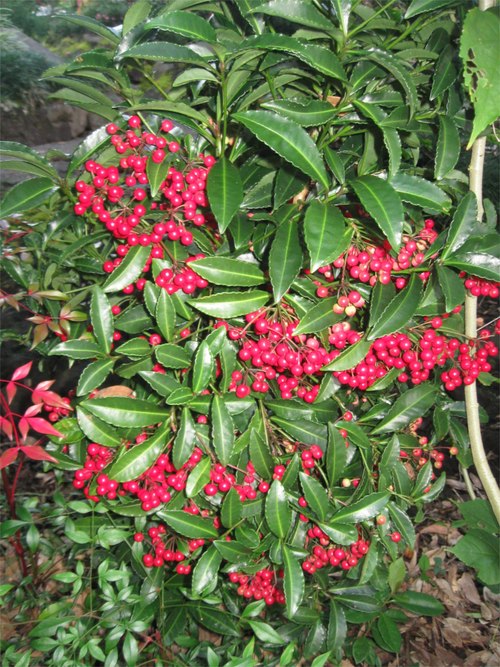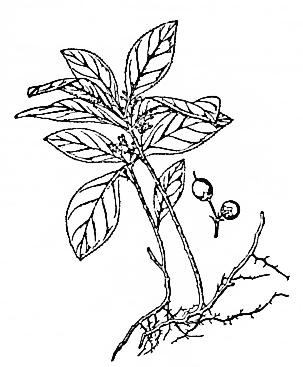 Ardisia
japonica. 矮地茶 Ǎi dì chá,
紫金牛 Zǐ jīn niú Short land tea
Family: Myrsinaceae
Ardisia
japonica. 矮地茶 Ǎi dì chá,
紫金牛 Zǐ jīn niú Short land tea
Family: Myrsinaceae
PART USED: Whole plant
FUNCTIONS
1. Stimulates Blood circulation, detoxifies.[1] Activate Blood.[2]
2. Transform sputum.[2] Resolve phlegm.[1] Relieve cough, benefit Dampness.[2]
INDICATIONS
1. Acute or chronic cough. Tuberculous, hemoptysis.[1] Hemoptysis. Chronic bronchitis. Pulmonary tuberculosis,[1] pneumonia,[1] various respiratory tract infections.[1]
2. Traumatic injuries.[1,2]
3. Conjunctivitis.[1] Jaundice.
PREPARATIONS: Decoction. Whole plant 15-30 g.[1,2]
 HABITAT:
HABITAT: